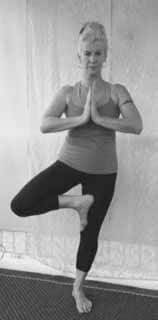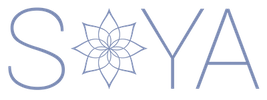[av_textblock size=” font_color=” color=”]
by Rhona Parsons, SOYA500
Are you looking for a way to strengthen your Yoga practice and that of your students? I have been teaching Yoga for 19 years and when I became a Pilates instructor in 2000 I realized that core work was the missing link in mastering many of the poses. I felt clumsy and couldn’t get grounded. Once I mastered incorporating my core into the poses, my yoga practice became so much stronger.
Teaching to connect and strengthen our deep stabilizing muscles is critical for creating success in Yoga for us and our students, as well as maintaining spinal health. Our strength comes from within and when we connect the breath, bandhas, and drishti to our core, our practice becomes so much more!
Learning the art of Pilates will not only help you become more in-tuned with the body but will teach you the art of becoming a skillful thinking instructor infusing functional training into your classes. Your students will become stronger and taller and be able to connect body and mind so much easier while building strength from within and learning to connect breath with movement. Learning the art of lateral breathing will increase their lung capacity which, in turn, will help them hold poses longer and breathe easier!
Breathing is a very important principle in Pilates. Many of us are shallow breathers and in Pilates, we need to learn how to breathe laterally into our ribs when working on strengthening our core. To activate our deep abdominal muscle, Transversus Abdominus (TVA), we need to pull belly button to spine without rounding our spine, creating a compression of TVA and the top layers (Rectus Abdominus and Internal/External Obliques) as well. The small lumbar muscles in our back, Multifidus, intertwine with the TVA to activate our inner girdle. When we activate TVA, our pelvic floor muscles naturally engage (another group that helps to stabilize the pelvis).
In Pilates we inhale through the nose and exhale through the mouth. When we create a forced exhalation, the abdominals contract and the organs are pushed up against the diaphragm stopping it from moving down when the air is drawn into the body. Instead, the diaphragm “attaches” itself to the top of the abdominal cavity, the ribs elevate and the air is sent into the lower portion of the lungs, expanding the ribs out to the sides.
Our normal breathing pattern shows us that on inhaling, the rib cage automatically lifts up coming away from our body; therefore, we usually inhale upon extension of any spinal exercises. When we exhale, our ribs naturally drop down towards the torso so in Pilates, we exhale as we go into any flexion exercises of the torso. To help you focus on the breathing pattern, try this exercise:
[/av_textblock]
[av_one_third first min_height=” vertical_alignment=’av-align-top’ space=” margin=’0px’ margin_sync=’true’ padding=’0px’ padding_sync=’true’ border=” border_color=” radius=’0px’ radius_sync=’true’ background_color=” src=” attachment=” attachment_size=” background_position=’top left’ background_repeat=’no-repeat’ animation=” mobile_display=”]
[av_textblock size=” font_color=” color=”]
Standing: Pull your belly button to your spine before you begin. Placing your hands on the bottom sides of your rib cage, inhale and feel your ribs expanding into your hands. Exhale, pull your belly button in even more, and feel the ribs returning back to their original shape. Do this exercise 8-10 times noticing your breath becoming more controlled.
[/av_textblock]
[/av_one_third]
[av_one_third min_height=” vertical_alignment=” space=” custom_margin=” margin=’0px’ padding=’0px’ border=” border_color=” radius=’0px’ background_color=” src=” background_position=’top left’ background_repeat=’no-repeat’ animation=” mobile_display=”]
[av_image src=’https://www.soyayoga.com/wp-content/uploads/2016/08/rhona-1.jpg’ attachment=’5632′ attachment_size=’full’ align=’center’ styling=” hover=” link=” target=” caption=” font_size=” appearance=” overlay_opacity=’0.4′ overlay_color=’#000000′ overlay_text_color=’#ffffff’ animation=’no-animation’][/av_image]
[/av_one_third]
[av_one_third min_height=” vertical_alignment=” space=” custom_margin=” margin=’0px’ padding=’0px’ border=” border_color=” radius=’0px’ background_color=” src=” background_position=’top left’ background_repeat=’no-repeat’ animation=” mobile_display=”]
[av_image src=’https://www.soyayoga.com/wp-content/uploads/2016/08/rhona-2.jpg’ attachment=’5631′ attachment_size=’full’ align=’center’ styling=” hover=” link=” target=” caption=” font_size=” appearance=” overlay_opacity=’0.4′ overlay_color=’#000000′ overlay_text_color=’#ffffff’ animation=’no-animation’][/av_image]
[/av_one_third]
[av_textblock size=” font_color=” color=”]
 VRKSASANA
VRKSASANA
- Stand in Tadasana
- Magnetize legs by pressing through , belly to spine, and latch shoulder blades
- Press left foot to the floor, spreading toes (roots) and feel the weight in the front of the foot (under the balls of the toes) and both corners of the heel. Shift your weight onto the foot, pull belly to spine, latch shoulder blades into place and tighten buttocks.
- Bend right knee and place the sole of your foot on your left leg where you feel most comfortable; toes touching floor and heel on ankle, on the inside of calf, inside of thigh or in half lotus. Bring heel slightly forward (to help with rotation of leg), toes pointing downward.
- Keep hips facing forward and turn knee out to the right; tighten buttocks
- Bring hands together in Anjali Mudra in front of your heart, pressing evenly with your palms to create a ring of strength beginning at one hand, up through the arm, across the shoulders and down through the other arm to the hand.
- Find your drishti and begin to grow tall by pushing through left foot and keeping belly to spine. (Imagine a string coming out through the crown of your head)
- Steady gaze and hold for 5-8 breaths.
- Repeat on the left
Rhona Parsons is offering a magical Pilates-infused-Yoga certification course and will teach you all this and more! Included in the 16 hours of instruction, demonstration and testing with a PiY Master Trainer. You will learn the foundational elements of PiY; the 7 principles of the Art of B.A.L.A.N.C.E., anatomy and physiology, and Pilates and Yoga sequences that will be broken into warm-up, Yoga flow, core strength/conditioning, floor work and cool down.
PIY Certification courses 2016:
TERRACE, BC September 24th/25th
KELOWNA BC October 29th/30th
VERNON BC November 4th/6th
To find out more go to www.bodyworksbms.com
[/av_textblock]

Recent Comments